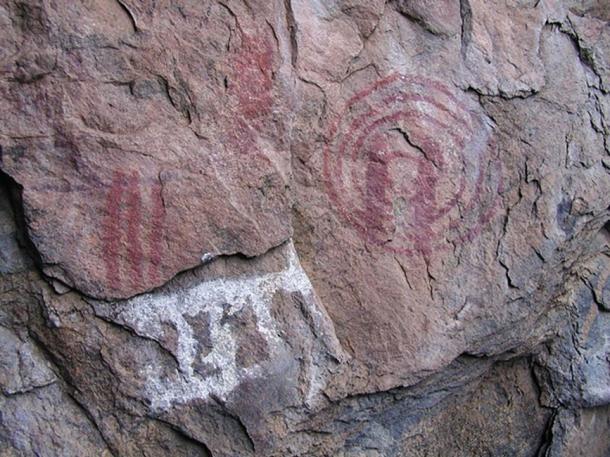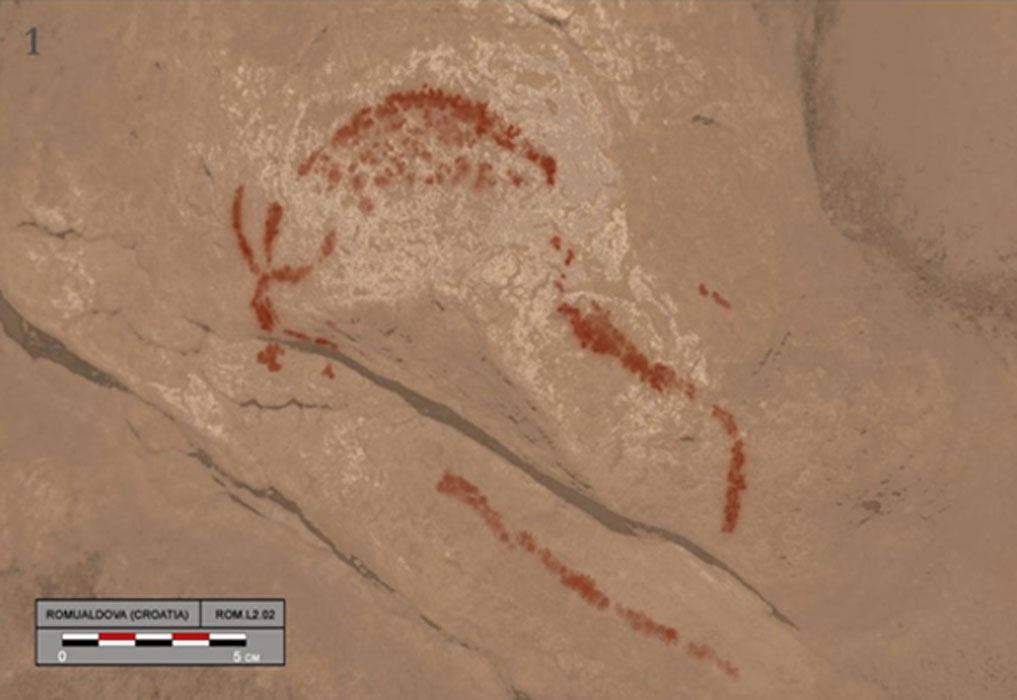Archaeologists Identify First Prehistoric Figurative Cave Art in Balkans - It’s Symbolic!
There was an explosion of symbolism in human culture during the Paleolithic period. Around the world, examples of cave art, some of it rather strange, began cropping up over 35,000 years ago. But some locations have been more willing to share their prehistoric artwork than others. One place where Paleolithic cave art is still relatively unknown, and thus highly valued, is the Balkans. It is there that an international team led by an archaeologist from the University of Southampton and the University of Bordeaux has finally unearthed the first example of Paleolithic figurative cave art in the region.
Dr. Aitor Ruiz-Redondo worked with researchers from the universities of Cantabria (Spain), Newfoundland (Canada), Zagreb (Croatia) and the Archaeological Museum of Istria (Croatia) to study the paintings, which could be up to 34,000 years old.
Where Was the Cave Art Discovered?
The cave art was first discovered in 2010 in Romualdova Pećina ('Romuald's cave') at Istria in Croatia, when Darko Komšo, Director of the Archaeological Museum of Istria, noticed the existence of the remains of a red color in a deep part of the cave.

Representation of the cave art discovered in Balkans. (Drbug / Public Domain)
Following his discovery, the team led by Dr. Ruiz-Redondo and funded by the French State and the Archaeological Museum of Istria, with the support of Natura Histrica, undertook a detailed analysis of the paintings and their archaeological context.
What Drawings Were Discovered in the Cave Art in Balkans?
This led to the identification of several figurative paintings, including a bison, an ibex, and two possible anthropomorphic figures, confirming the Palaeolithic age of the artworks. Furthermore, an excavation made in the ground below these paintings led to the discovery of a number of Palaeolithic age remains; a flint tool, an ochre crayon, and several fragments of charcoal.

Representation of the flint tool discovered. (Fæ / CC BY-SA 2.0)
Radiocarbon dating of these objects show an estimated age of around 17,000 years and other indirect data suggest the paintings date to an even earlier period -- at around 34,000-31,000 years ago. Further research will be conducted in order to establish the precise age of the rock art.
Findings are published in the journal Antiquity.
The Oldest Figurative Art and Famous Paleolithic Cave Art
The oldest known example of figurative art found in a cave was reported in November, 2018 and comes from Borneo. It is there that archaeologists discovered reddish-orange cattle-like creatures painted on the walls about 40,000 years ago.
N. Rushton describes some of the more popular and strange designs in Paleolithic cave art that archaeologists have discovered over the years:
“Whilst many of the images are naturalistic images of humans, mammals and birds, there is also extensive representation of therianthropic beings, that is part human, part animal shape-shifters. There are also many beings that seem to be distorted humans, perhaps better described as humanoid. These images suggest that the Paleolithic artists were attempting to tell stories and incorporate messages and meaning within the stories, which they deemed important. The fact that many of the beings represented in the cave art are of a supernatural quality is symptomatic of what we might call folklore.”
Some famous examples of rock and cave art around the world include: the painted extra-terrestrial-like beings of Sego Canyon, cup and ring marks found across the Scottish Highlands, the haunting figures called Wandjina painted by the Australian Aboriginal people, and the world famous Lascaux rock art.
Findings From the Study of the Figurative Cave Art in the Balkans
This discovery expands the so far sparse register of Palaeolithic art in south east Europe. It makes Romualdova Pećina the first site where figurative Palaeolithic rock art has been discovered in this area. Together with Badanj in Bosnia and Herzegovina, the two are the only examples of rock art from the Palaeolithic period in the Balkans.
- Mysterious Origins – What we don’t know about the emergence of humans
- Archaeologists Discover a Long-lost Illyrian City ‘Mistaken for Natural Rocks’ in Albania
- Discovery of 70,000-year-old African Settlement Challenges Previous Theories

Palaeolithic rock art, similar to the figurative cave art in Balkans. (Eric00000007 / CC BY-SA 3.0)
Dr. Aitor Ruiz-Redondo, a British Academy-funded Newton International Fellow at the University of Southampton and postdoctoral researcher at the University of Bordeaux, said:
"The importance of this finding is remarkable and sheds a new light on the understanding of Palaeolithic art in the territory of Croatia and the Balkan Peninsula, as well as its relationship with simultaneous phenomena throughout Europe."
A new project started by Dr. Ruiz-Redondo and his team, funded by the British Academy, will develop further research at these two sites during the next few years.
Top image: Digital tracing of Bison featured in rock art. Source: Aitor Ruiz-Redondo
The article ‘Archaeologists identify first prehistoric figurative cave art in Balkans’ was originally published on Science Daily. It has been edited for content and length.
Source: University of Southampton. “Archaeologists identify first prehistoric figurative cave art in Balkans.” Science Daily. Science Daily, 10 April 2019.
References
Ruiz-Redondo, A., Komšo, D., Garate Maidagan, D., Moro-Abadía, O., González-Morales, M., Jaubert, J., Karavanić, I. 2019. Expanding the horizons of Palaeolithic rock art: the site of Romualdova Pećina. Antiquity. [Online] Available at: https://www.cambridge.org/core/journals/antiquity/article/expanding-the-horizons-of-palaeolithic-rock-art-the-site-of-romualdova-pecina/738597492507013D73EA8FDFB521A59F




















Comments
The Australian Aboriginals have existed in Australia for 50 to 60000 years and have been creating cave art for all that time. They have never been anywhere else, OK they did refresh their cave and wall art from time to time making it difficult to accurately age but as they are the oldest race on earth that have been in the same place for that time then theirs must be the oldest so called cave art in the world.
This is indeed a fascinating discovery! Thanks for sharing!
But, please, note that Romualdova Pecina is NOT in the Balkans, but in the Adriatic Region, more precisely in Istria, which is the part of the Republic of Croatia not far from Italy so it is as if you said that Italy is in the Balkans as well.
It would be better if you wrote either "in Croatia" or "in SE Europe" instead. (Although, it is much closer to central Europe that the SE Europe.)